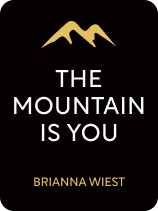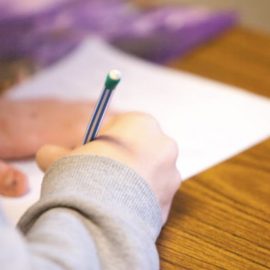

This article is an excerpt from the Shortform book guide to "The Mountain Is You" by Brianna Wiest. Shortform has the world's best summaries and analyses of books you should be reading.
Like this article? Sign up for a free trial here.
Do you know how to find purpose? What is a life purpose?
A life purpose gives you a reason for all of your passions and hobbies in your life. In The Mountain Is You, Brianna Wiest tells you how to identify your purpose so you can live a fulfilled life.
Let’s look at Wiest’s advice for finding purpose and your ideal self.
Identifying Your Purpose and Your Ideal Self
Wiest explains that you should strive for two goals: achieving your life purpose and becoming your ideal self. Your life purpose isn’t just a hobby or the job you do. Rather, it’s the point where your talents and passions converge with the needs of society—an activity that inspires and fulfills you but that’s also something that you can make a career out of. Your ideal self is the most powerful, successful, happiest, and productive version of yourself that you can imagine. Wiest offers two exercises to help you identify your life purpose and ideal self.
To know how to find purpose in your life, Wiest recommends answering the following questions: What are you willing to work for, be challenged by, or even feel pain over? If you weren’t concerned about others’ approval, what would you choose as a career or aspire to do? What skills or activities come naturally to you or do you find yourself regularly engaging in? What would you do on an ideal day without considering work or obligations? What skills, values, or traits do you want to be remembered by?
To identify your ideal self, Wiest recommends engaging in a meditation with your future self. First, find a quiet place, sit down with a pen and paper, take deep breaths to center yourself, and release any fears or negative emotions. When you feel totally relaxed, visualize the highest version of yourself sitting across from you. Then, take note of how they look, behave, speak, and communicate through their body language; what are they wearing, how are they feeling, and what do they do every day?
Next, listen to the advice that this future self wants to give you, even if it’s something you might disagree with at first. This advice should be uplifting, caring, and helpful. Now, imagine the particular aspects of this person’s life that allow them to live their purpose—where they’re living, what job they’re doing, the relationships they have, their daily tasks, their habits, and so on. Finally, imagine them giving you the key to that life—their life, routines, behaviors, and skills are now yours. This final step will put you in an “action” mindset that encourages you to enact the tasks and behaviors necessary to become your ideal self.
How to Identify Your Purpose in Life
In The Success Principles, Jack Canfield agrees that finding your purpose is crucial to feeling fulfilled and adds a few steps to Wiest’s recommendations:
- List the times in your life that you’ve felt most happy. Determine whether these instances share any characteristics and how you might be able to make a career from them.
- Write down 30 things you want to be, 30 things you want to have, and 30 things you want to do before you die. This step also might help you answer Wiest’s last question—what do you want your legacy to be?
- Brainstorm what areas of your life are important to you and what you want them to look like so you can make sure your life purpose accomplishes them. For example, what kind of relationships do you want, and what characteristics they should include? You can consider other areas like finances, leisure, or community as well.
The “Future Self” Method
Wiest’s recommendation to identify your ideal self by meditating with, observing, and seeking guidance from your future self is gaining traction in spiritual communities and the field of psychology. However, as this trend gains popularity, people are realizing that the “future self” method might be flawed—it can cause you to develop disempowering behaviors and ways of thinking about your current self.
In The Willpower Instinct, Kelly McGonigal adds scientific context to this argument, explaining that the “future self” method can be ineffective because people are often imagining a stranger when they envision their “future self,” not simply a better version of themselves. This causes a disconnect between your self-image and the image you’ve imagined. And contrary to Wiest’s claims, McGonigal says that this disconnect makes you more likely to engage in behaviors and impulses that are immediately gratifying, like self-sabotage, and less likely to engage in activities that will help you become your ideal self in the long term.
To avoid this disconnect and make your future self an inspiring and motivating force, McGonigal adds two steps to the “future self” method that Wiest discusses:
- Use the imagined emotions of your future self to guide your present actions. When you’re facing a real-life decision—like whether you should go for a run or hang out at home and watch TV—imagine how your future self would feel about your choice. Would they feel empowered or thankful? Or, would they feel disappointed and regretful?
- Write to your future self. McGonigal recommends using sites such as futureme.org to write emails to your future self and schedule them to be sent on future dates. This way, you can hold yourself accountable for following through on the activities and behaviors that help you become the ideal self you’ve envisioned.

———End of Preview———
Like what you just read? Read the rest of the world's best book summary and analysis of Brianna Wiest's "The Mountain Is You" at Shortform.
Here's what you'll find in our full The Mountain Is You summary:
- Why the only thing standing in your way of achieving your goals is you
- How to achieve your life purpose and become your ideal self
- How to identify your self-sabotaging behaviors and stop them






